Bells Beach, Victoria: Surfing Paradise Down Under
Ride the waves at Bells Beach, one of the world’s iconic surf spots. Catch a perfect wave from the Southern Ocean. Victoria’s rugged coastline is your backdrop.
Plan an unforgettable Bells Beach vacation with this guide. Learn about surf conditions, local attractions, and top accommodations.
Weather and Water Conditions
Season |
Avg. Temp (°C) |
Water Temp (°C) |
Surf Conditions |
|---|---|---|---|
Summer (Dec-Feb) |
20-25 |
18-20 |
Smaller swells, good for beginners |
Autumn (Mar-May) |
15-20 |
16-18 |
Consistent swells, best surf season |
Winter (Jun-Aug) |
10-15 |
13-15 |
Larger swells, challenging conditions |
Spring (Sep-Nov) |
15-20 |
14-16 |
Variable conditions, improving towards summer |
Bells Beach has a temperate climate with four seasons. Each offers unique surfing experiences.
Autumn (March to May) is the best time for surfing, with consistent swells and pleasant weather.
Winter brings bigger waves. Summer has smaller swells, ideal for beginners.
Always check the latest surf forecasts and water temperatures. Know your skill level and the current conditions.
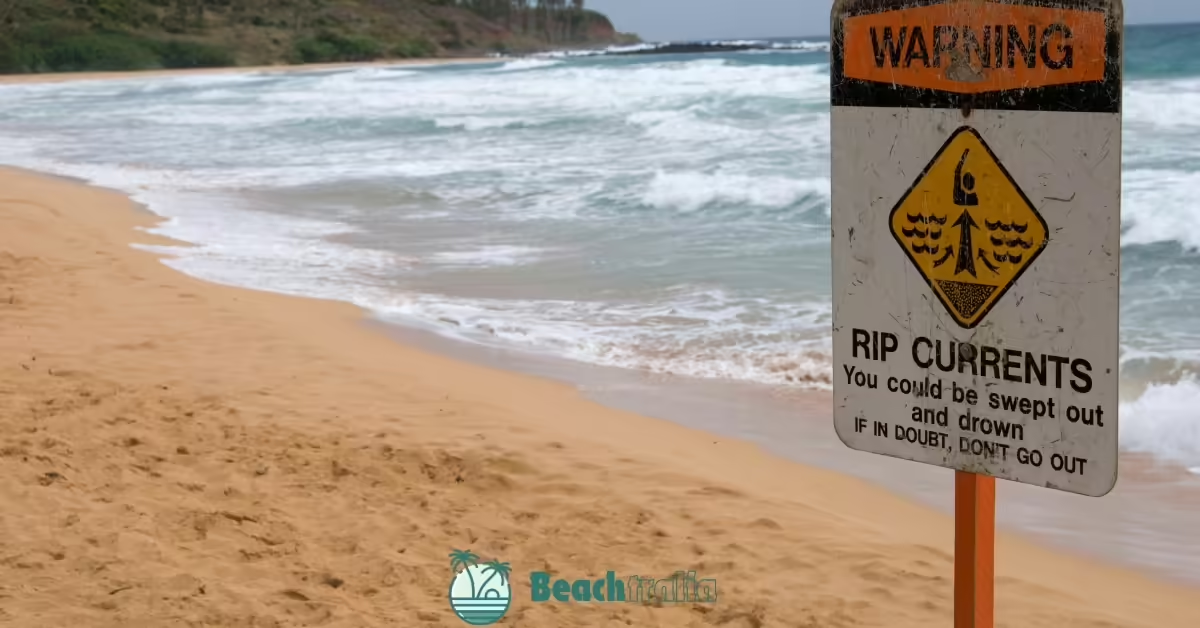
Safety Tip:
Be aware of rip currents, which can be strong at Bells Beach. Always observe the beach flags and follow lifeguard instructions.
If you’re unsure of the conditions, consider a lesson from a local surf school to get familiar with the beach.
Ocean conditions shift without warning. Always be cautious and respect the sea’s power.
Top Attractions and Activities
Activity |
Best Time |
Skill Level |
Description |
|---|---|---|---|
Surfing |
Mar-May |
Intermediate to Advanced |
World-class waves at the iconic Bells Beach break |
Surf Coast Walk |
Year-round |
All levels |
44km coastal trail with stunning views |
Watching Pro Surfers |
Easter |
Spectators |
Annual Rip Curl Pro surfing competition |
Beach Relaxation |
Dec-Feb |
All levels |
Sunbathing and picnicking on the beach |
Photography |
Sunrise/Sunset |
All levels |
Capture the beauty of the coastline |
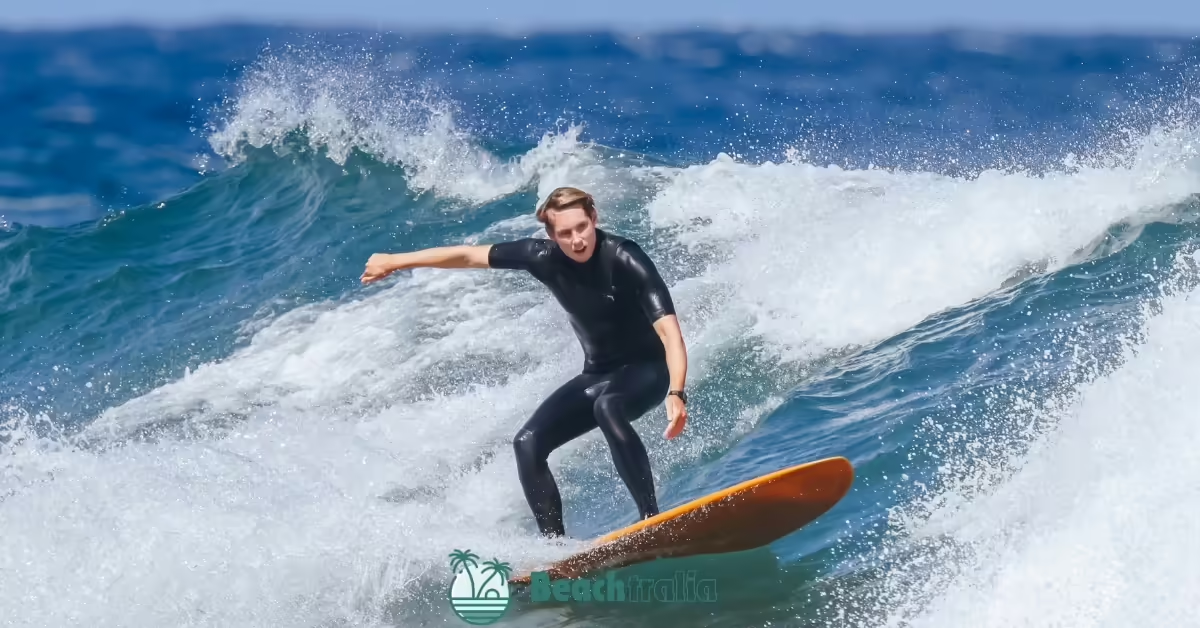
Bells Beach is famous for its great surf. But it offers more than waves. Here’s a breakdown of the top attractions and activities you can enjoy during your visit:
- Surfing: The main draw of Bells Beach is, of course, its world-class surf. The Southern Ocean’s powerful waves are perfect for expert surfers. If you’re a beginner, try local surf schools in Torquay.
- Surf Coast Walk: For those on land, the Surf Coast Walk is a great way to explore the coastline. It offers spectacular views. This 44 km trail stretches from Torquay to Aireys Inlet, with Bells Beach as one of its highlights. You can divide the walk into sections and choose a length that fits your fitness level.
- Watching Pro Surfers: If your visit coincides with Easter, you’re in for a treat. The Rip Curl Pro is one of the world’s oldest surfing contests. It takes place at Bells Beach. It’s a great chance to see top surfers and enjoy the thrill.
- Beach Relaxation: Bells Beach isn’t safe for swimming due to strong currents. But, it’s a beautiful spot for sunbathing, picnicking, or enjoying the coast. The cliffs by the beach are perfect for whale watching. They offer great views during migration season (June to September).
- Photography: The rugged beauty of Bells Beach makes it a paradise for photographers. The golden cliffs contrast with the blue ocean. They create stunning views, especially at sunrise and sunset.
- Nearby Attractions: The town of Torquay has the Australian National Surfing Museum. It is also the HQ of major surf brands like Rip Curl and Quiksilver. It’s worth a visit to learn about surfing history and pick up some authentic surf gear.
Bells Beach is famous for its tough surf. But non-surfers can enjoy other activities too. Explore Bells Beach’s waves, trails, and atmosphere for a classic Aussie coast.
Beach Activities and Water Sports
Bells Beach is famous for its surfing. But, you can enjoy other beach activities and water sports there. Here’s a comprehensive look at what you can do:
- Surfing:
- Skill Level: Intermediate to Advanced
- Equipment: Surfboards can be rented in nearby Torquay.
- Lessons: Available from local surf schools for beginners.
- Best Spots: Bells Beach main break, Winki Pop, Southside
- Stand-Up Paddleboarding (SUP):
- Skill Level: Beginner to Intermediate
- Best Location: Calmer days at Bells or nearby Jan Juc Beach
- Equipment: Rentals are available in Torquay
- Kitesurfing:
- Skill Level: Intermediate to Advanced
- Best Location: Nearby beaches like Thirteenth Beach or Ocean Grove.
- Lessons: Available from specialized schools in the area.
- Bodyboarding:
- Skill Level: Beginner to Intermediate
- Equipment: You can buy or rent bodyboards in Torquay.
- Beach Volleyball:
- Location: Set up a game on the sand at Bells Beach or nearby Torquay Beach.
- Equipment: Bring your own or rent from local sports shops.
- Fishing:
- Locations: Rock fishing at Bells Beach (for experienced anglers only) or nearby beaches.
- Target Species: Australian Salmon, Snapper, Whiting
- Licenses: Recreational fishing license required; available online.
- Snorkeling:
- Best Location: Nearby Point Danger Marine Sanctuary
- Equipment: Bring your own or rent from dive shops in Torquay.
- Coastal Hiking:
- Trail: Surf Coast Walk
- Distance: 44 km total, can be done in sections.
- Difficulty: Easy to Moderate
Safety should always be your top priority when engaging in water sports. Always check the conditions, know your limits, and if possible, don’t go alone.
For surfing and kitesurfing at Bells Beach, prior experience is best. If not, take lessons from certified instructors.
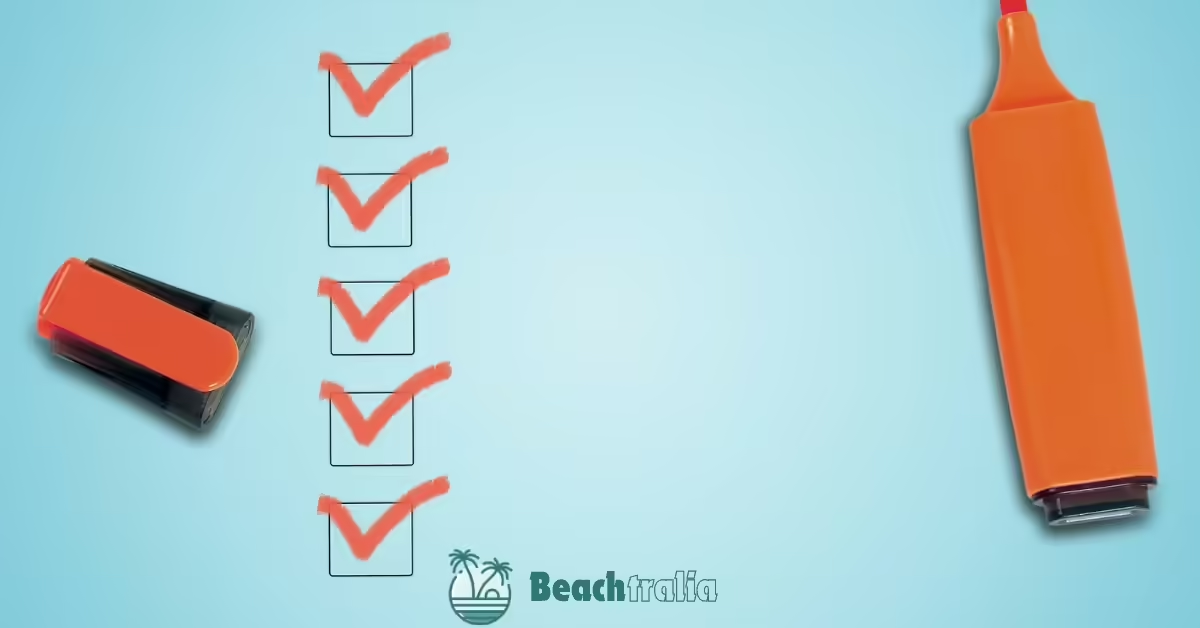
Equipment Checklist:
- Wetsuit (water can be cold, especially outside of summer)
- Surfboard or bodyboard (if surfing/bodyboarding).
- Sunscreen and hat.
- Plenty of water
- First aid kit
- Towels and a change of clothes
You can enjoy Bells Beach and the Surf Coast, no matter your skill. Try different activities. The area caters to everyone, whether you’re surfing, paddling, or walking the coast.
Exploring Local Attractions
Top 5 Local Attractions |
Distance from Bells Beach |
Best For |
|---|---|---|
Australian National Surfing Museum |
5 km |
Surfing history and culture |
Great Ocean Road |
Starts nearby |
Scenic drives and coastal views |
Point Addis Marine National Park |
7 km |
Wildlife and nature walks |
Torquay Farmers’ Market |
5 km |
Local produce and crafts |
Surf Coast Walk |
Starts at Bells Beach |
Coastal hiking and sightseeing |
Bells Beach is a destination in itself. But the Surf Coast region has many must-see attractions and experiences. Here’s a guide to help you explore the area:
- Torquay: Torquay, 5 km from Bells Beach, is Australia’s surfing capital. Visit the Australian National Surfing Museum to explore surfing’s history. It’s a key highlight. The town also hosts major brands like Rip Curl and Quiksilver. Their outlets offer great deals on surf gear.
- Great Ocean Road: One of the world’s most scenic coastal drives starts near Bells Beach. Take a day trip to see iconic landmarks like the Twelve Apostles, Loch Ard Gorge, and the Otway National Park.
- The Surf Coast is famous for its fresh seafood and local produce in the cuisine. Try these local favorites:
- Fisho’s Torquay: For the freshest fish and chips.
- Bomboras: Offers great views of the ocean along with modern Australian cuisine.
- The Pond Cafe: Great for breakfast or brunch. It uses locally sourced ingredients.
- Cultural Experiences:
- Visit the Narana Aboriginal Cultural Centre in Geelong. It shares Indigenous Australian culture.
- Attend the Nightjar Festival in Torquay this January. It has live music, food trucks, and local artisans.
- Nature and Wildlife:
- Visit the Point Addis Marine National Park. It has diverse marine life and beautiful rock formations.
- Take a guided tour to spot kangaroos, wallabies, and native birds in their natural habitat.
- Surf Coast Walk: This 44 km trail offers stunning ocean views. It passes through various ecosystems. You can do sections of the walk, with Bells Beach as your starting or ending point.
- Torquay Farmers’ Market: It’s on the third Saturday of each month. This market is a great place to sample local produce, artisanal foods, and handmade crafts.
Respect the local environment and wildlife during your explorations. The Surf Coast is committed to sustainability. So, please support eco-friendly tours and businesses during your visit.
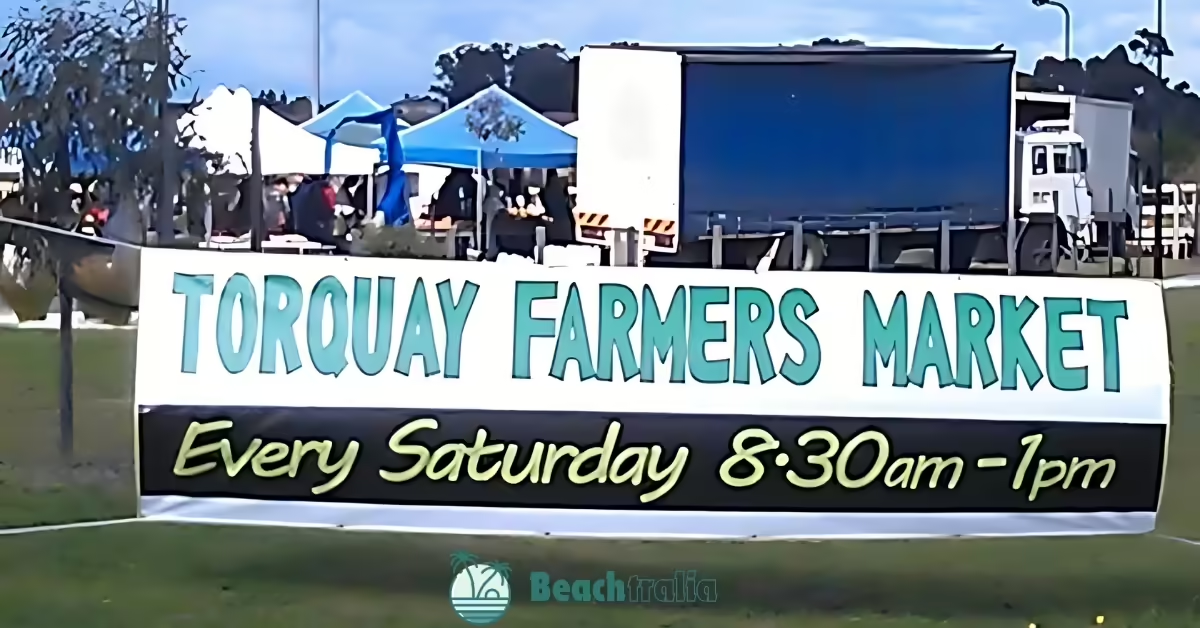
A trip beyond Bells Beach will deepen your appreciation for this part of Victoria. It has a rich culture, natural beauty, and a laid-back lifestyle.
The Surf Coast has something for every traveler. It has surfing history, local cuisine, and pristine nature.
Beach Facilities and Amenities
Facility |
Location |
Details |
|---|---|---|
Parking |
Bells Beach car park |
Free, limited spaces |
Toilets |
Near the car park |
Basic facilities |
Showers |
Near the car park |
Outdoor cold showers |
Viewing Platforms |
Along the cliff |
Great for spectating |
Food & Drink |
Torquay (5 km away) |
Various options available |
Surf Equipment Rental |
Torquay |
Multiple surf shops |
Bells Beach is famous for its world-class waves. Its facilities are basic, though, due to its status as a natural reserve. Here’s what you need to know about the amenities available:
- Parking: There’s a free car park at Bells Beach. But, spaces are limited during peak surf times and events. Arrive early to secure a spot, particularly on weekends and during the Rip Curl Pro event.
- Toilets: Basic toilet facilities are available near the car park. Regular maintenance keeps them in good condition. They may get busy at peak times.
- Showers: There are cold outdoor showers near the car park. Use them to rinse off after your surf session.
- Changing Rooms: There are no dedicated changing rooms at Bells Beach. Most surfers change at their cars or use beach towels for privacy.
- Viewing Areas: Several cliff-top platforms offer great views of the surf. These are great for spectators and photographers.
- Food and Drink: Bells Beach lacks direct access to food vendors. The nearest options are in Torquay, about 5 km away. It’s recommended to bring your own water and snacks if you plan to spend the day at the beach.
- Surf Equipment Rental: There are no rentals at Bells Beach. You can rent surfboards, wetsuits, and other gear at surf shops in nearby Torquay.
- Lifeguards: Bells Beach is not patrolled by lifeguards due to its challenging conditions. Always check the surf report and only enter the water if you’re an experienced surfer.
- Picnic Areas: There are no designated picnic areas. However, many visitors enjoy picnics on the beach or in the grassy areas near the car park. Remember to take all rubbish with you to help preserve the natural environment.
- Wi-Fi and Phone Signal: Bells Beach has good mobile coverage, but there is no public Wi-Fi.
- Accessibility: A paved path leads to the main viewing area. But the beach has stairs that may challenge those with mobility issues.
To preserve its beauty and surfing heritage, officials keep Bells Beach undeveloped. The facilities are basic.
But, they add to the surf experience. It’s made Bells Beach legendary.
For more amenities, the nearby town of Torquay has what you need for a comfy beach day.
Accommodation Options
Accommodation Type |
Distance from Bells Beach |
Best For |
|---|---|---|
Camping |
5-10 km |
Budget travelers, nature lovers |
Hostels |
5-7 km |
Backpackers, solo travelers |
Beach Houses |
2-5 km |
Families, groups |
Boutique Hotels |
5-10 km |
Couples, luxury seekers |
Surf Lodges |
3-7 km |
Surf enthusiasts |
When planning your trip to Bells Beach, choose the right place to stay. It is crucial for a comfortable and enjoyable stay. There are no lodging options at Bells Beach. But, the nearby towns of Torquay and Jan Juc have options for all budgets and tastes:
- Camping:
- Torquay Foreshore Caravan Park: It’s 5 km from Bells Beach. It offers powered and unpowered sites.
- Jan Juc Caravan Park: A bit further but still convenient, about 7 km from Bells Beach.
- Pros: Budget-friendly, close to nature
- Cons: Basic facilities; weather-dependent.
- Hostels:
- Bells Beach Backpackers: Despite the name, it’s located in Torquay, about 5 km from Bells Beach.
- Torquay Surf Beach YHA: Offers dormitory and private rooms.
- Pros: Affordable, social atmosphere
- Cons: Shared facilities; can be noisy
- Beach Houses:
- Various vacation rentals are available in Jan Juc and Torquay.
- Pros: Privacy, home-like amenities, often with ocean views.
- Cons: Can be expensive, especially during peak season.
- Boutique Hotels:
- Peppers The Sands Resort: Luxury hotel with a golf course, 7 km from Bells Beach.
- RACV Torquay Resort: An upscale resort with multiple amenities, about 8 km away.
- Pros: Comfort, amenities, professional service
- Cons: Higher price point; further from the beach.
- Surf Lodges:
- Torquay Surf City Motel: A budget-friendly option with a surf vibe, about 5 km from Bells Beach.
- Bells Beach Lodge: Located in Jan Juc, about 3 km from Bells Beach.
- Pros: Surf-oriented atmosphere, often with board storage.
- Cons: Can be basic and popular during surf events.
Tips for Choosing Accommodation:
- Book in advance, especially for peak seasons (summer and during the Rip Curl Pro event).
- Consider your transportation options. If you’re not renting a car, choose a hotel with easy access to transit or within walking distance of the beaches.
- If you’re bringing your own gear, find places with surf-specific amenities. Look for board storage and rinse areas.
- Check cancellation policies, as the weather can affect surf conditions.
Staying near Bells Beach is a bit more convenient for early surf sessions. But, Torquay and Jan Juc have better access to restaurants, shops, and other amenities.
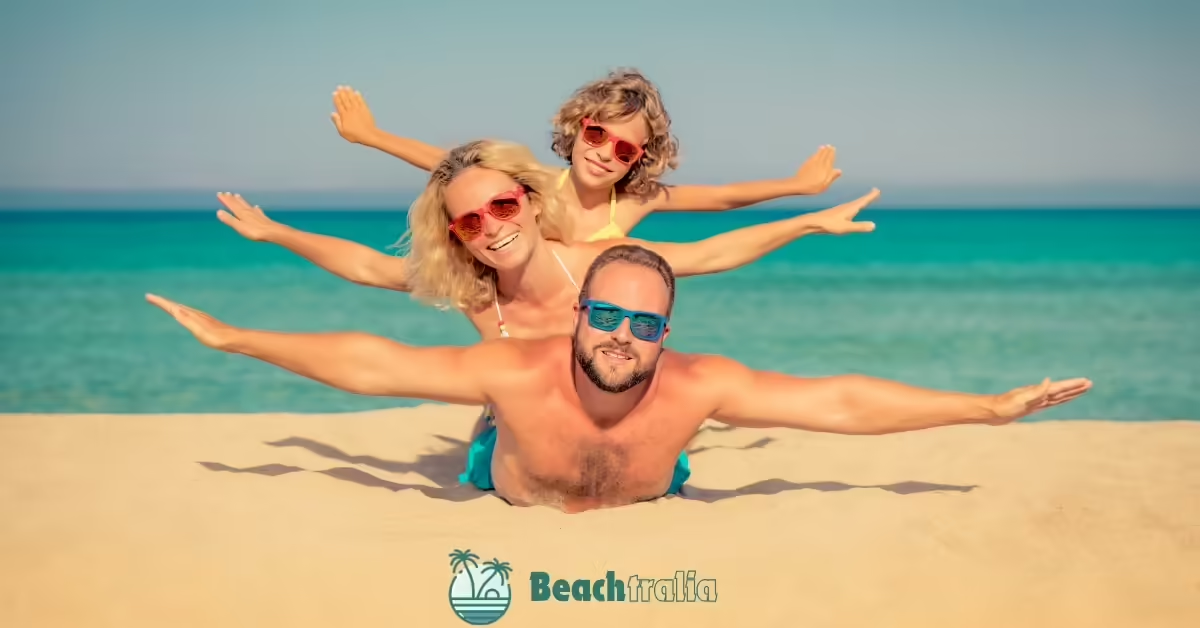
Transportation
Transport Option |
From Melbourne |
Around Bells Beach |
Pros |
Cons |
|---|---|---|---|---|
Car Rental |
1.5-2 hours drive |
Flexible |
Convenient, storage for gear |
Parking can be limited |
Public Bus |
2-3 hours |
Limited service |
Affordable |
Infrequent, may not go directly to beach |
Organized Tour |
1.5-2 hours |
Set itinerary |
Hassle-free, informative |
Less flexibility |
Taxi/Rideshare |
1.5-2 hours |
Available in Torquay |
Door-to-door service |
Expensive for long distances |
Bicycle |
Not recommended |
Great for local travel |
Eco-friendly, scenic |
Limited to short distances |
Getting to Bells Beach and navigating the surrounding area requires some planning. Here’s a comprehensive guide to help you make the best transportation choices:
- Getting to Bells Beach:a) From Melbourne:
- Car: The most popular and flexible option. Take the M1 and then the B100 (Great Ocean Road). Travel time is about 1.5 to 2 hours.
- Public Transport: Take a V/Line train to Geelong, then a local bus to Torquay. From there, you’ll need to take a taxi or rideshare to Bells Beach.
- Organized Tours: Many companies offer tours from Melbourne that include Bells Beach. They are either day trips or multi-day trips.
b) From Interstate:
- Fly into Melbourne Airport (Tullamarine) or Avalon Airport. Then, follow the options above.
- Some companies offer direct shuttle services from the airports to the Surf Coast.
- Getting Around the Bells Beach Area:a) Car Rental:
- Pros: Offers the most flexibility for exploring the area.
- Cons: Parking can be limited at Bells Beach during peak times.
- Tip: Book in advance, especially during summer and major events.
b) Public Bus:
- The 89 bus runs between Torquay and Lorne, stopping near Bells Beach.
- Pros: An affordable option for budget travelers.
- Cons: Infrequent service; may not align with your schedule.
c) Bicycle:
- Several places in Torquay offer bike rentals.
- Great for short trips and exploring the coastal trails.
- Not suitable for carrying surfboards or large amounts of gear.
d) Taxi/Rideshare:
- Available in Torquay and the surrounding areas.
- Convenient for short trips, but can be expensive for longer journeys.
e) Walking:
- The Surf Coast Walk connects many beaches in the area.
- Great for sightseeing, but not practical for long distances or carrying gear.
- Parking at Bells Beach:
- There’s a free car park at Bells Beach, but it fills up quickly during peak times.
- Arrive early, especially on weekends and during events.
- Be prepared to park further away and walk during busy periods.
- Transportation Tips:
- If you’re bringing your own surfboard, a rental car with roof racks is ideal.
- Consider staying in Torquay or Jan Juc to be close to amenities and transport options.
- For eco-conscious travelers, consider using public transport or bicycles for shorter trips.
- Always check road conditions, especially if you’re driving the Great Ocean Road.
Bells Beach is the main attraction. But, with reliable transport, you can explore the Surf Coast. It will enhance your experience of this beautiful part of Victoria.
Timing Your Visit
Season |
Months |
Surf Conditions |
Weather |
Events |
|---|---|---|---|---|
Summer |
Dec-Feb |
Smaller waves, good for beginners |
Warm, dry |
Nightjar Festival (Jan) |
Autumn |
Mar-May |
Best surf, consistent swells |
Mild, some rain |
Rip Curl Pro (Easter) |
Winter |
Jun-Aug |
Large swells, for experienced surfers |
Cool, wet |
Whale watching season |
Spring |
Sep-Nov |
Variable conditions |
Mild, occasional rain |
Surf Coast Century (Sep) |
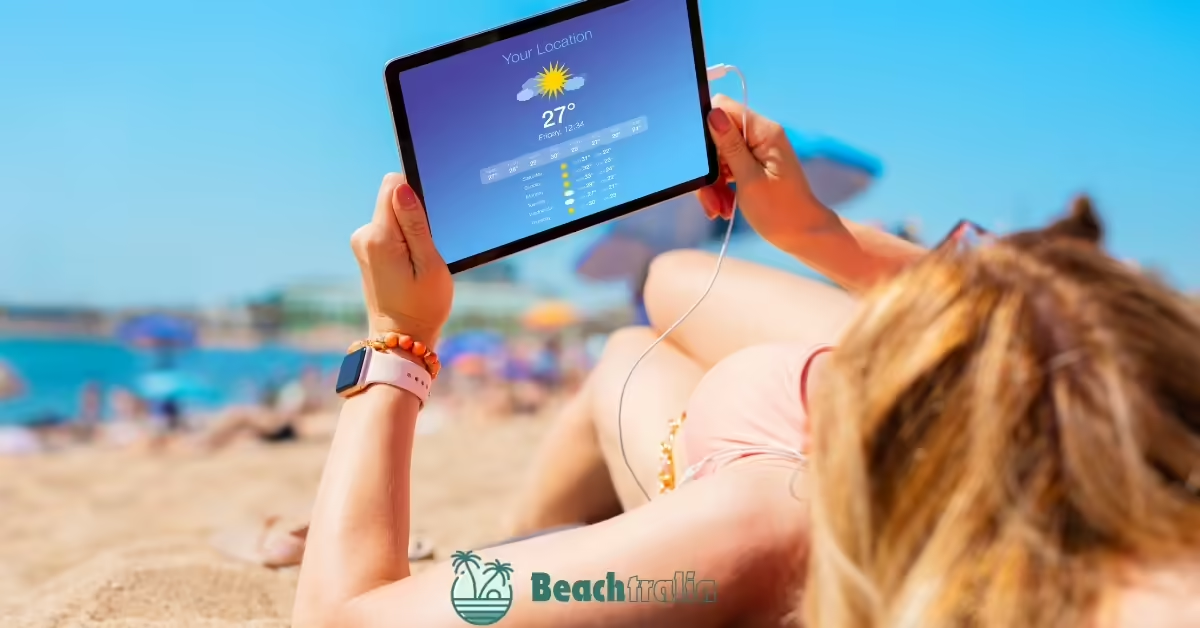
Picking the best time for Bells Beach is key. Here’s a simple guide to plan your visit:
- Summer (December to February):
- Weather: Warm and dry, with temperatures ranging from 20°C to 25°C (68°F to 77°F).
- Surf: Generally smaller waves, ideal for beginners or those who are learning to surf.
- Crowds: Busiest season due to school holidays and good weather.
- Events: Nightjar Festival in Torquay (January) – music, food, and artisan markets.
- Autumn (March to May):
- Weather: Mild temperatures, ranging from 15°C to 20°C (59°F to 68°F).
- Surf: The best season for surfing is when there are consistent swells.
- Crowds: Less busy than summer, but can get crowded during Easter.
- Event: Rip Curl Pro Bells Beach (around Easter) – a top surfing contest.
- Winter (June to August):
- Weather: Cool and wet, temperatures between 10°C to 15°C (50°F to 59°F).
- Surf: Large swells, suitable for experienced surfers.
- Crowds: The least-crowded season.
- Activities: Whale watching season (Southern Right Whales migrate along the coast).
- Spring (September to November):
- Weather: Mild with occasional rain, temperatures from 15°C to 20°C (59°F to 68°F).
- Surf: Variable conditions, improving as summer approaches.
- Crowds: Moderate, increasing toward the end of spring.
- Events: Surf Coast Century Ultra-Marathon (September).
Best Time to Visit:
- For Surfing: Autumn (March to May) offers the most consistent surf conditions.
- For Beginners: Summer (December to February) has smaller waves and warmer water.
- For Fewer Crowds: Winter (June to August), but be prepared for cooler weather.
- For Events: Easter for the Rip Curl Pro, January for the Nightjar Festival.
Tips for Timing Your Visit:
- Book accommodations well in advance if visiting during the summer or for the Rip Curl Pro.
- Consider visiting in the shoulder seasons (late spring or early autumn). You’ll find good weather and smaller crowds.
- Check surf forecasts before your trip to ensure conditions match your skill level.
- If you like wildlife, visit in winter to watch whales.
- Be aware that some facilities and tours may have reduced hours during the winter months.
Bells Beach and the Surf Coast are worth visiting any time. Your best time to visit depends on your interests, surfing skills, and weather tolerance.
However, Bells Beach’s beauty will impress you, no matter when you come.
Safety First
Beach Flag |
Meaning |
|---|---|
Red and Yellow |
Supervised swimming area |
Red |
Danger – do not enter the water |
Yellow |
Caution – potential hazards |
Black and White Checkered |
Surfcraft riding area |
Safety is crucial at Bells Beach. Here’s how to stay safe:
- Beach Flag System:
- Bells Beach has no permanent lifeguards. Flags may be used during events.
- Learn the beach flag system used in Australia (see the table above).
- Surf Conditions:
- Experienced surfers are best suited for Bells Beach, known for its powerful waves.
- Always check the surf forecast before entering the water.
- Be aware of rip currents, which can be strong at Bells Beach.
- Sun Safety:
- The Australian sun is intense, even on cloudy days.
- Use high SPF sunscreen, reapply regularly, and wear a hat and sunglasses.
- Try to avoid sun exposure during the hottest part of the day (usually 10 a.m. to 4 p.m.).
- Marine Life:
- While rare, shark sightings can occur. Follow any warnings or beach closures.
- Be aware of bluebottle jellyfish, especially after strong winds.
- Cliff Safety:
- Stay on designated paths and viewing areas when on the cliffs.
- Do not climb or sit on cliff edges for photos.
- Emergency Services:
- In case of emergency, dial 000 for police, fire, or ambulance.
- The nearest hospital is in Geelong, about a 30 minutes drive from Bells Beach.
- Surfing Etiquette:
- Respect other surfers and follow proper surf etiquette to avoid collisions.
- Don’t “drop in” on other surfers or take waves out of turn.
- Weather Awareness:
- Check weather forecasts before your visit.
- Be prepared for sudden weather changes, especially in winter.
- Hydration:
- Bring plenty of water, especially on hot days.
- There are no drinking water facilities at Bells Beach itself.
- Personal Belongings:
- Keep valuables secure. Don’t leave items unattended on the beach.
- Consider using a waterproof bag for your belongings if you’re entering the water.
No lifeguards patrol Bells Beach. Your safety is up to you. If you’re uncertain, it’s better to be cautious.
Enjoy Bells Beach’s beauty, but always prioritize safety.
Environmental Awareness
Ecosystem |
Key Species |
Conservation Status |
|---|---|---|
Coastal Heathland |
Grass Trees, Orchids |
Vulnerable |
Marine Environment |
Southern Right Whales, Australian Fur Seals |
Protected |
Intertidal Zone |
Sea Stars, Limpets |
Sensitive |
Cliff Face |
Peregrine Falcons |
Protected |
Bells Beach is famous for surfing and also hosts delicate ecosystems. Visitors must understand and respect this environment.
Here’s what to know about the ecosystem and how to be a sustainable tourist:
- Local Ecosystems:
- Coastal Heathland: Coastal heathland covers the cliffs around Bells Beach. It is home to unique flora, such as grass trees and orchids.
- Marine Environment: The waters off Bells Beach are in a protected marine sanctuary. They support a diverse marine life.
- Intertidal Zone: The rocky shores host diverse small creatures. They have adapted to living between the tides.
- Cliff Face: Provides nesting sites for birds of prey, like peregrine falcons.
- Protected Areas:
- Bells Beach is in the Bells Beach Surfing Recreation Reserve. It was created to protect the surfing experience and the natural environment.
- The nearby Point Addis Marine National Park protects 4,600 hectares of ocean. It extends from the high-water mark to three nautical miles out to sea.
- Wildlife:
- Marine Mammals: Southern Right Whales can often be seen during their migration (June to September).
- Birds: Keep an eye out for sea eagles, peregrine falcons, and various shorebirds.
- Marine Life: The waters host diverse fish and, occasionally, Australian Fur Seals.
- Sustainable Tourism Practices:
- Stay on Designated Paths: This helps to prevent erosion and protects sensitive vegetation.
- Take Your Rubbish With You: There are no bins at Bells Beach, so practice “carry in, carry out.”
- Respect Wildlife: Observe animals from a distance and never feed them.
- Use Reef-Safe Sunscreen: Traditional sunscreens can harm marine life. Choose mineral-based, reef-safe alternatives.
- Minimize Water Usage: The area can have water shortages. So, be mindful of your water use.
- Local Conservation Efforts:
- SANE (Surfers Appreciating Natural Environment): A local volunteer group. It works on dune restoration and weed control.
- Surf Coast Shire Council: Implements various environmental management strategies to protect the area.
- Educational Opportunities:
- Visit the Torquay Visitor Centre for information about local ecosystems and conservation efforts.
- Consider joining a guided nature walk to learn more about the local flora and fauna.
- Responsible Surfing:
- Choose surf wax with a gentle eco-impact and boards crafted from eco-sources.
- Be mindful of marine life when surfing, especially during whale migration season.
By being mindful travelers, we can protect Bells Beach for future generations. Every small effort in conservation counts.
Cultural Considerations
Aspect |
Etiquette Tips |
|---|---|
Surf Culture |
Respect the lineup, don’t “drop in” on others |
Indigenous Heritage |
Respect sacred sites, participate in cultural tours |
Beach Etiquette |
No alcohol, no loud music, clean up after yourself |
Dress Code |
Casual beachwear acceptable, cover up in towns |
Language |
English widely spoken, learn basic surf slang |
Bells Beach is more than a spot on the map. It’s steeped in surfing tradition and Indigenous history. Knowing and respecting these aspects will make your visit more meaningful.
Here’s what to consider:
- Surf Culture:
- In the surfing world, people hold Bells Beach in high regard as hallowed ground.
- Respect the lineup and wait your turn for waves.
- Don’t “drop in” on other surfers or snake waves.
- Be friendly and courteous to fellow surfers, regardless of their skill level.
- Indigenous Heritage:
- The area around Bells Beach is the traditional land of the Wadawurrung people.
- Respect any marked sacred sites or areas of cultural significance.
- Consider taking an Indigenous cultural tour to learn about the area’s rich history.
- Many believe that the name “Bells Beach” comes from John Calvert Bell, who grazed his cattle in the 1840s.
- Beach Etiquette:
- No alcohol on the beach.
- Keep noise levels down, especially music.
- Always clean up after yourself and take all the rubbish with you.
- Respect the natural environment (as discussed in the Environmental Awareness section).
- Dress Code:
- Beach attire is acceptable on the beach and in very casual settings.
- When visiting towns or restaurants, it’s polite to cover up (e.g., wear a shirt and shoes).
- Remember to be sun-smart with hats, sunglasses, and appropriate coverage.
- Language:
- English is widely spoken throughout the area.
- Learning some basic Aussie slang can be fun and helpful.
- “Arvo” = Afternoon
- “Esky” = Cooler
- “Sunnies” = Sunglasses
- Surf Slang:
- “Grommet” or “Grom” = Young surfer
- “Gnarly” = Difficult or dangerous (but often in a good way)
- “Stoked” = Very happy or excited
- Local Customs:
- Australians generally greet each other casually with “G’day” or “How’s it going?”
- Tipping is not expected but is appreciated for exceptional service.
- Queuing (lining up) is respected and expected.
- Respect for the Environment:
- This is deeply ingrained in both surf culture and local attitudes.
- Participate in beach clean-ups if you have the opportunity.
- Events and Competitions:
- If you visit during the Rip Curl Pro or other events, please respect the competitors and event staff.
- Follow all event guidelines and restrictions.
- Photography Etiquette:
- Always ask permission before photographing individuals, especially Indigenous peoples.
- Be mindful of others when taking photos from viewing platforms.
- Community Engagement:
- Support local businesses and surf shops.
- Engage with locals respectfully; they’re often happy to share their knowledge and stories.
When you visit Bells Beach, you join a community. This community treasures its nature, surfing tradition, and Indigenous culture.
By respecting these elements, you enrich your visit and help keep the beach’s unique charm.
Packing Essentials
Category |
Items |
|---|---|
Beach Gear |
Swimwear, towels, beach umbrella, beach bag |
Sun Protection |
Sunscreen (SPF 50+), hat, sunglasses, rash guard |
Surf Equipment |
Surfboard or bodyboard, wetsuit, surf wax, board leash |
Clothing |
Casual wear, warm layers, rain jacket, comfortable shoes |
Safety |
First aid kit, insect repellent, reusable water bottle |
Electronics |
Camera, waterproof phone case, power bank |
Miscellaneous |
Snacks, cash, reusable shopping bag, travel documents |
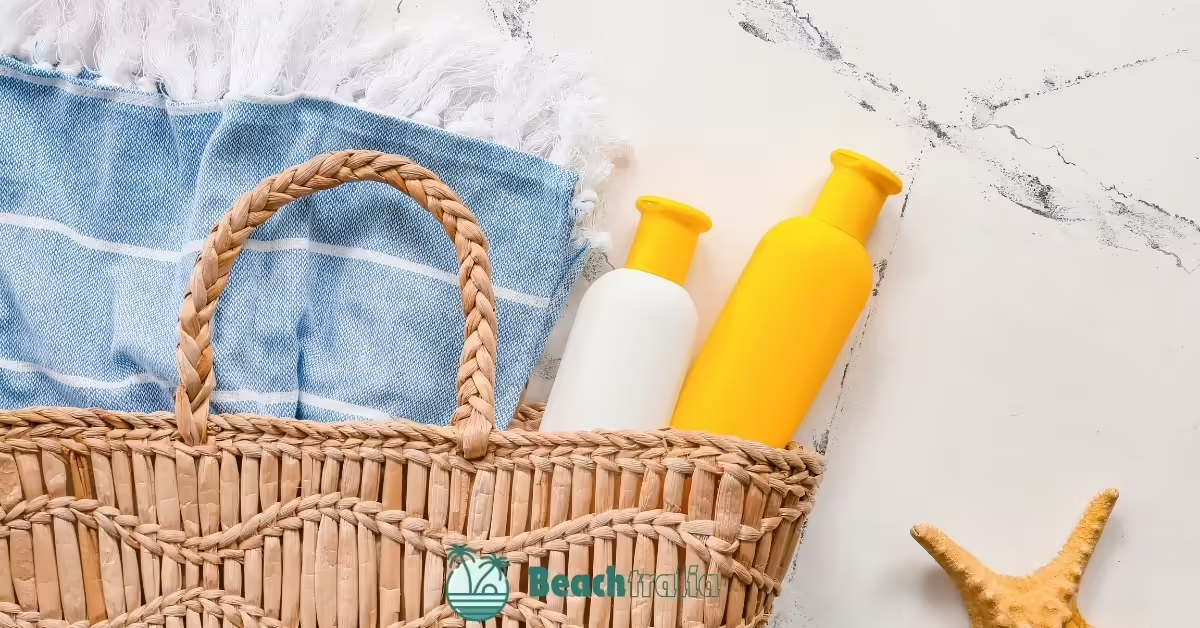
Packing the right gear is crucial for a comfortable and enjoyable visit to Bells Beach. Here’s a comprehensive packing list to ensure you’re well-prepared for your beach adventure:
- Beach Essentials:
- Swimwear (bring an extra set)
- Beach towels
- Beach umbrella or sun shelter
- Beach bag
- Waterproof bag for wet items
- Sun Protection:
- High SPF sunscreen (reef-safe, if possible)
- Lip balm with SPF
- Wide-brimmed hat or cap
- Sunglasses with UV protection
- Rash guard or sun shirt
- Surf Equipment:
- Surfboard or bodyboard (can be rented locally if needed)
- Wetsuit (thickness depends on the season)
- Surf wax
- Board leash
- Surf earplugs
- Surfboard repair kit
- Clothing:
- Casual, comfortable clothing
- Light, breathable layers
- Warm jacket or fleece (especially for early mornings or evenings)
- Rain jacket or windbreaker
- Comfortable walking shoes
- Flip-flops or sandals
- Safety Items:
- Basic first-aid kit
- Any personal medications
- Insect repellent
- Reusable water bottle
- Electrolyte powder or tablets
- Electronics and Entertainment:
- Camera or GoPro
- Waterproof phone case
- Power bank and chargers
- Binoculars (for whale watching)
- Books or e-reader
- Food and Drink:
- Snacks and energy bars
- Picnic supplies if planning a beach picnic
- Cooler or esky for drinks and perishables
- Miscellaneous:
- Cash (some local vendors may not accept cards)
- Reusable shopping bag
- Travel documents and ID
- Map or guidebook of the area
- Ziplock bags for protecting electronics or storing wet items
- Optional Items:
- Yoga mat for beach yoga
- Portable beach games (frisbee, volleyball, etc.)
- Sketchbook and pencils for artists
- Hammock for relaxing between surf sessions
Pack light and efficiently. You can buy or rent many items locally. However, being prepared is wise, especially for activities like surfing.
Seasonal Considerations:
- Summer (Dec-Feb): Focus on sun protection and staying cool.
- Winter (Jun-Aug): Pack extra warm layers and a thicker wetsuit.
- Spring/Autumn: Bring a mix of warm and cool-weather gear.
Pack these essentials to be ready for activities and weather at Bells Beach. It’s better to be over-prepared than under-prepared for beach and surf adventures.
Conclusion
Bells Beach is a famous surf spot. It has natural beauty, a rich culture, and thrilling experiences. Surfers, nature lovers, and travelers alike can find something here.
This guide prepares you for a safe, respectful, and unforgettable visit. Respect the environment, embrace surf culture, and appreciate the area’s Indigenous history.
Catch waves, watch pros, or soak in the scenery – Bells Beach promises lifelong memories. Pack your bags. Grab your surfboard or camera. Get ready for the adventure of a lifetime on Victoria’s Surf Coast, Australia.

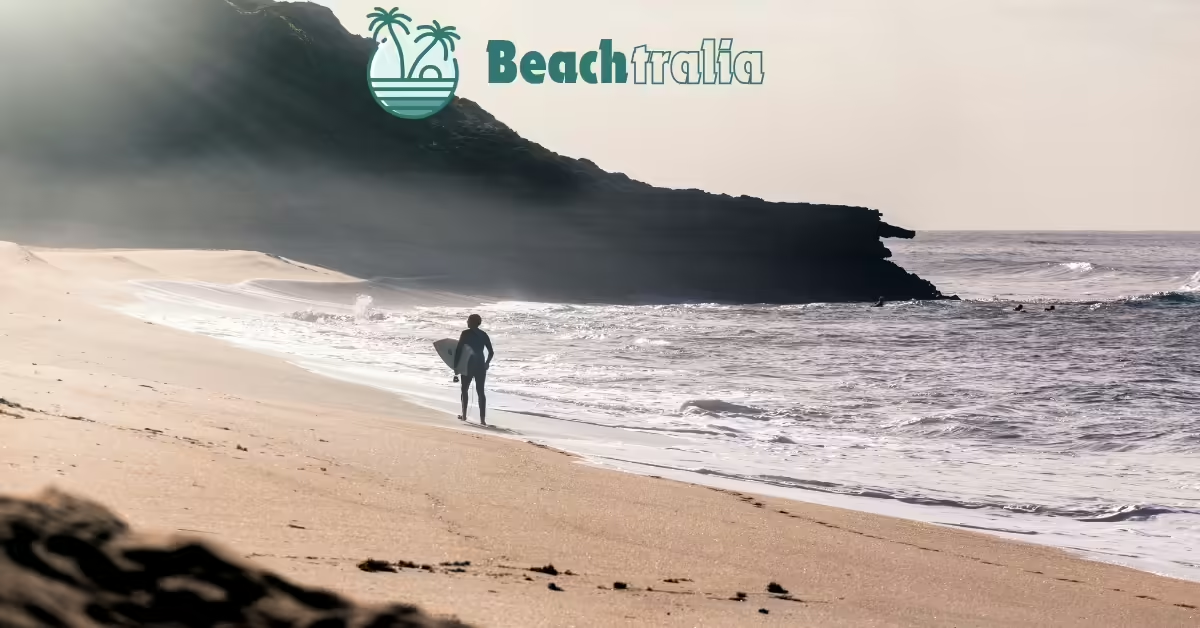
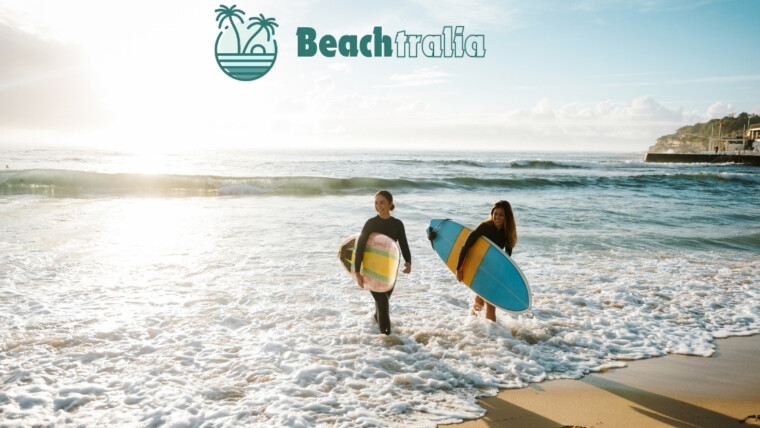
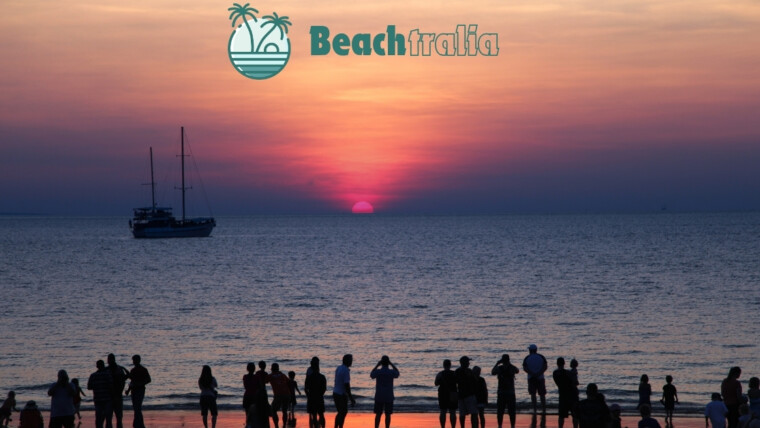
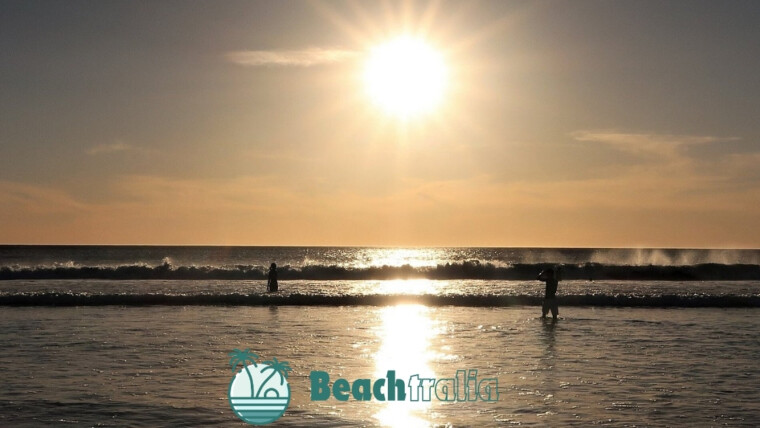
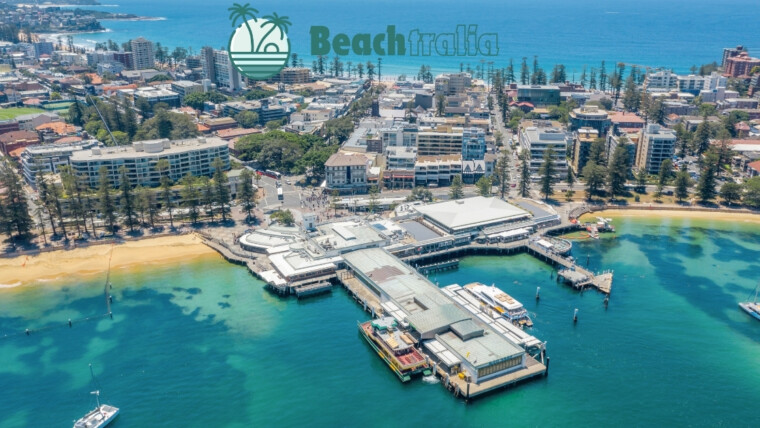
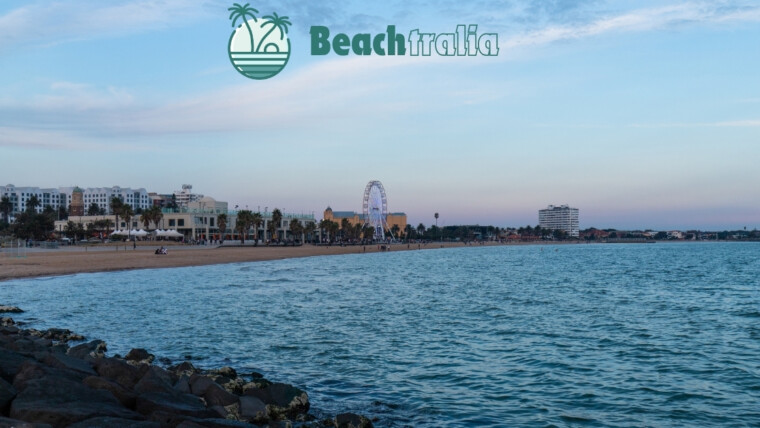
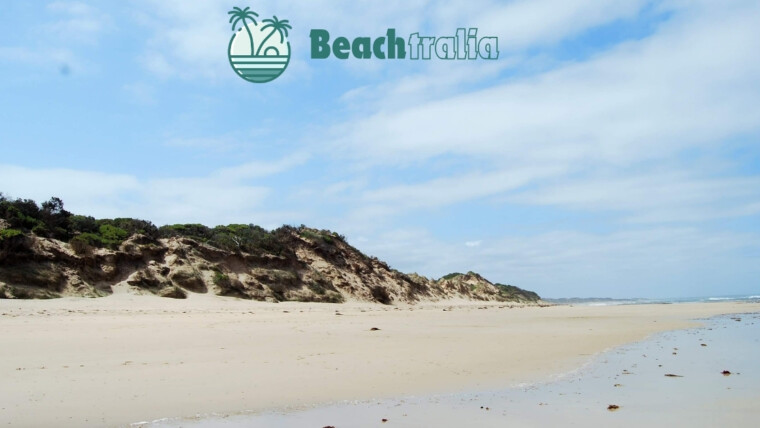
6 Reviews to Bells Beach, Victoria
Next off to Bell Beach, about a 30 min drive away. Quite a few people around and plenty of surfers (perhaps the dregs from the the recent RipCurl Pro-Surfing competition. The swell was beckoning, so after snagging a few rad pipes, we dried off and ventured further south.
For the seasoned surfer, Bells beach renowned for its yearly Rip Curl pro surfing competition which attracts the international elite of its sport, offers long waves & big swells that are a board riders paradise. The surrounding headland provides a great vantage point to view the competition or just watch the aerial views on display by the daily surfers who attempt to master the waves. Acknowledgement is given to the land that was first home to the Gulidjan aboriginal peoples. Bells beach has brought great prominence to such surfing legends as: Kelly Slater, Mick Fanning, Mark Occhilupo. Its iconic long winding, wooden staircase & stunning sunsets make for a photographers dream. This is a must stop in Torquay along your drive on the Great Ocean Road.
The waves were breaking at Winkipop not Bells but still worth a visit. No flags or surf patrol so we headed back to Jan Juc for a swim
In the interest of full disclosure I’ve never ‘hung ten’. Or even 5…
So as a non surfer what was Bells Beach like? Well it is nice to see a place that’s famous even if in a sphere you don’t normally swim in. But for the non surfer the appeal is that it’s quite an interesting little cove and beach. It’s darn near perfect in shape with cliffs surrounding in. There are multiple lookouts there where you can get good views and watch the surfers do their thing.
There is a reasonable amount of parking and facilities and you can include checking the place out in between checking out Jan Juc Beach and Bird Rock Lookout. So even if you aren’t a surfer this is still a worthwhile piece of coastline to check out.
Absolutely beautiful place to visit. Beaches are beautiful and so much to see and do around the area. The town its self is expensive and very touristy. We enjoy doing some waterfalls, some beach walks and exploring around the area.
The beach itself seems pretty poor, but the waves just seem to go in forever. A few surfers in the water and you could see just why the place is famous as the waves were decent.
Surfers Paradise Beach
Mindil Beach
Tarcoola Beach
Manly Beach